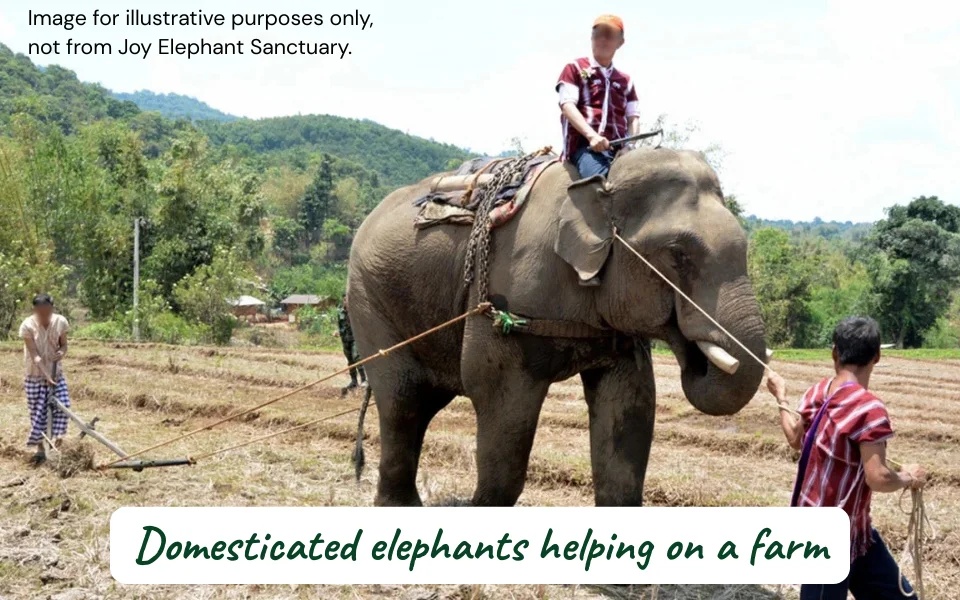What is the Difference Between Wild Elephants and Domesticated Elephants?
During a trip to Thailand, visitors often see elephants in national parks or at ethical sanctuaries. This leads to a common question: What is the difference between wild elephants and domesticated elephants? Understanding this helps travelers make better choices, especially when joining elephant tours in Chiang Mai and other parts of Thailand.

Wild Elephants (ช้างป่า)

Domesticated Elephants (ช้างบ้าน)
Domesticated elephants, often called “house elephants”, have lived alongside humans in Thailand for hundreds of years. In the past, many were trained for heavy work such as logging, ceremonies, or tourism. Today, their lives vary: some elephants still live in people’s houses and villages, some in elephant parks that provide shows or riding for tourists, and others—more fortunate ones—are cared for in sanctuaries where they no longer have to work. Unlike wild elephants, domesticated elephants are used to human presence, which makes it safer for people to feed them, walk beside them, or take part in ethical observation programs. However, the key difference is that domesticated elephants depend on people for food, shelter, and care. That’s why it is important to support sanctuaries that prioritize their well-being.

Key Differences Between Wild, Domesticated, and Joy Elephant Sanctuary Elephants
| Aspect | Wild Elephants | Domesticated Elephants | Domesticated Elephants at Joy Elephant Sanctuary |
|---|---|---|---|
| Habitat | Live freely in forests and national parks. | Live under human care in villages, houses, or elephant camps. | Live in a natural forest environment with space to roam, forage, and socialize. |
| Behavior | Independent, cautious around humans. | More social with humans due to generations of close living. | Comfortable with humans but not forced to perform; allowed to express natural behaviors. |
| Diet | Forage naturally for grasses, fruits, bark, and plants. | Fed by caretakers, often with sugarcane, bananas, or provided forage. | Given healthy food daily and allowed to forage naturally to maintain physical and mental well-being. |
| Role in Tourism | Protected by conservation laws; rarely seen by tourists except in national parks. | Often used in shows, riding camps, or tourist attractions. | Observed in their natural habitat with no riding, no shows, no tricks — only ethical interaction and education. |
| Care & Welfare | Dependent on natural environment and survival instincts. | Dependent on humans for food, shelter, and veterinary care. | Receive daily care, medical checks, enrichment activities, and a life free from hard labor. |
| Human Interaction | Avoid humans, sometimes conflicts with villages. | Directly interact with humans, often trained for work. | Interaction is gentle, respectful, and based on elephant choice — they can walk away anytime. |





